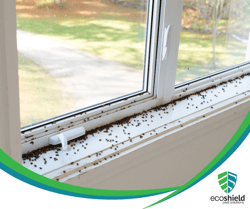 Ladybugs are colorful little insects that often find their way into our homes, leaving homeowners both puzzled and intrigued. These tiny, spotted beetles are a common sight in gardens and on windowsills during the warmer months, but when they start invading our living spaces in large numbers, it can be a perplexing situation. We'll explore the fascinating reasons behind the seasonal ladybug home invasion, shedding light on the factors that lead these bugs to seek shelter indoors and how to prevent these uninvited guests.
Ladybugs are colorful little insects that often find their way into our homes, leaving homeowners both puzzled and intrigued. These tiny, spotted beetles are a common sight in gardens and on windowsills during the warmer months, but when they start invading our living spaces in large numbers, it can be a perplexing situation. We'll explore the fascinating reasons behind the seasonal ladybug home invasion, shedding light on the factors that lead these bugs to seek shelter indoors and how to prevent these uninvited guests.
Ladybugs: Biology and Behavior
Ladybugs, also known as ladybirds in some parts of the world, are small, vibrant beetles belonging to the Coccinellidae family. These insects are instantly recognizable due to their distinctive red or orange bodies covered with black spots. While the most common ladybug species exhibit this classic appearance, some variations in color and spot patterns exist. After all, there are more than 5,000 ladybugs worldwide with a great diversity in size and markings!
Ladybugs are more than just their flashy appearance; they also play a vital role in pest control. Their diet primarily consists of aphids, mealybugs, and other plant-damaging pests, making them valuable allies for gardeners and farmers. These beetles have mouthparts designed for piercing and sucking, allowing them to feed on soft-bodied insects that plague crops and ornamental plants. Consequently, ladybugs are considered beneficial insects that help keep garden ecosystems in balance.
 Regarding their biology, ladybugs undergo a complete metamorphosis, with four distinct life stages: egg, larva, pupa, and adult. Eggs are typically laid near aphid colonies, providing a readily available food source for the emerging larvae. Ladybug larvae are elongated, spiny creatures with a voracious appetite, consuming aphids at an astonishing rate. Once they've gorged on enough food, they pupate, emerging as adults with their characteristic wing covers and vibrant colors.
Regarding their biology, ladybugs undergo a complete metamorphosis, with four distinct life stages: egg, larva, pupa, and adult. Eggs are typically laid near aphid colonies, providing a readily available food source for the emerging larvae. Ladybug larvae are elongated, spiny creatures with a voracious appetite, consuming aphids at an astonishing rate. Once they've gorged on enough food, they pupate, emerging as adults with their characteristic wing covers and vibrant colors.
Ladybugs exhibit interesting behaviors, such as aggregating in groups during the colder months to seek shelter from adverse weather conditions. This behavior is the reason they sometimes enter homes in large numbers, making themselves at home in windowsills and attics. Additionally, ladybugs can emit a noxious yellowish substance from their leg joints when threatened, deterring potential predators. Their bright coloration serves as a warning to predators that they may taste unpleasant or be toxic.
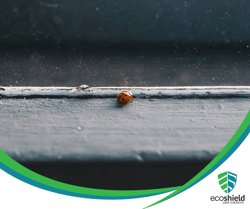 Beyond their pest-control role, ladybugs are celebrated in various cultures worldwide. They are often considered symbols of good luck and protection. In some folklore, they are believed to bring blessings and grant wishes when they land on you. Overall, while ladybugs can be bothersome in large numbers, they are also ecological allies, intriguing in their biology and behaviors, and offer a touch of charm and potentially even fortune in our lives!
Beyond their pest-control role, ladybugs are celebrated in various cultures worldwide. They are often considered symbols of good luck and protection. In some folklore, they are believed to bring blessings and grant wishes when they land on you. Overall, while ladybugs can be bothersome in large numbers, they are also ecological allies, intriguing in their biology and behaviors, and offer a touch of charm and potentially even fortune in our lives!
Why are There Ladybugs Inside my House?
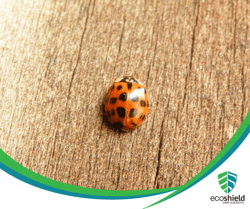 The presence of ladybugs inside your house can be attributed to a variety of reasons, most notably related to their behavior and survival instincts, as previously discussed. Ladybugs are known to seek shelter indoors, especially during the fall and winter months, for a few important reasons.
The presence of ladybugs inside your house can be attributed to a variety of reasons, most notably related to their behavior and survival instincts, as previously discussed. Ladybugs are known to seek shelter indoors, especially during the fall and winter months, for a few important reasons.
First, as temperatures drop, ladybugs attempt to find a warm and protected place to hibernate or overwinter. They often congregate in large numbers on the sunny sides of buildings, including the interior of your home, as it provides a stable and cozy environment. Cracks, crevices, and gaps in windows and doors are common entry points they use to access your living space.
Second, ladybugs are attracted to the light, which can lead them to mistakenly enter your home through windows and doors. They might swarm around exterior lighting fixtures and then accidentally make their way inside when doors or windows are opened. Once indoors, they can become disoriented and remain inside, unable to exit.
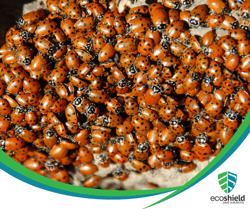 Additionally, the scent left behind by previous ladybugs can serve as a signal to others. If ladybugs have previously found refuge in your home, their pheromones can attract more ladybugs over time. This can lead to larger infestations if not managed swiftly and properly.
Additionally, the scent left behind by previous ladybugs can serve as a signal to others. If ladybugs have previously found refuge in your home, their pheromones can attract more ladybugs over time. This can lead to larger infestations if not managed swiftly and properly.
How Long Can Ladybugs Survive Indoors?
Ladybugs can survive indoors for varying durations, depending on several factors. These factors include the availability of food, temperature, and moisture levels inside the home. Generally speaking, ladybugs can endure indoors for several weeks to several months.
The primary challenge for ladybugs indoors is the lack of their natural food source, which typically consists of aphids, mealybugs, and other soft-bodied pests found in gardens. Ladybugs may consume some household pests, such as mites and small insects, but the limited availability of food can reduce their survival time.
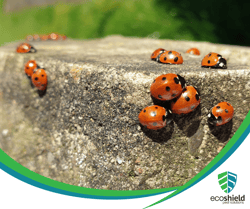 Temperature also plays a critical role in a ladybug's survival indoors. Ladybugs are cold-blooded insects, and they become less active as temperatures drop. In a warm and cozy indoor environment, their metabolic rate remains relatively higher, allowing them to live longer. However, if the indoor space is too cold or dry, it can significantly shorten their lifespan.
Temperature also plays a critical role in a ladybug's survival indoors. Ladybugs are cold-blooded insects, and they become less active as temperatures drop. In a warm and cozy indoor environment, their metabolic rate remains relatively higher, allowing them to live longer. However, if the indoor space is too cold or dry, it can significantly shorten their lifespan.
Ladybugs are resilient insects and can find hiding spots in the nooks and crannies of a home, like window frames, attics, and wall voids. These hiding spots can provide protection from predators and harsh environmental conditions. If ladybugs find a favorable microenvironment within your home, they may survive for several months. When the weather warms up, and outdoor conditions become more suitable, they will typically seek an exit, returning to their natural habitats to breed and continue their life cycle.
Can Ladybugs Cause Damage my Home or Belongings?
Ladybugs are generally not known for causing significant damage to houses or belongings. In fact, they are often considered beneficial insects due to their role in controlling garden pests. However, there are a few scenarios in which ladybugs may have an impact on your home and belongings.
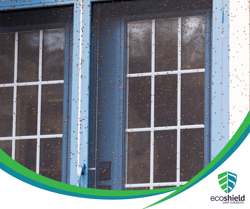 One of the most common concerns regarding ladybugs is their tendency to enter homes in large numbers during the fall and seek shelter from the cold weather. While they do not cause structural damage to your house, their presence indoors can be a nuisance. Ladybugs may cluster in windowsills, attics, or other warm, dry spaces. They can leave behind small stains or odors when crushed or disturbed.
One of the most common concerns regarding ladybugs is their tendency to enter homes in large numbers during the fall and seek shelter from the cold weather. While they do not cause structural damage to your house, their presence indoors can be a nuisance. Ladybugs may cluster in windowsills, attics, or other warm, dry spaces. They can leave behind small stains or odors when crushed or disturbed.
In some cases, ladybugs can be attracted to light-colored houses, especially those with a sunny exposure. They may congregate on the exterior walls of such homes. While this can create a visual nuisance, they do not typically harm the structure or paint of the house. Gentle methods, such as hosing them down or using a broom, can help relocate them away from your home.
In rare instances, ladybugs may nibble on certain plant-based fabrics like cotton or silk. This behavior is more likely when they are unable to find their preferred food source of aphids. However, the damage they cause to textiles is minimal and rarely a significant concern.
Can I Prevent Ladybugs in my Home?
 Preventing ladybugs from entering your home can be challenging, but there are several steps you can take to minimize their presence:
Preventing ladybugs from entering your home can be challenging, but there are several steps you can take to minimize their presence:
- Install Screens: Ensure that all doors and windows have well-fitting screens. This can help keep ladybugs out while allowing fresh air to circulate.
- Address Attractants: Ladybugs are drawn to light and warmth. Close curtains or blinds at night, especially on the sunny side of your home, to reduce the appeal of your interior. You can also turn off unnecessary lights to avoid attracting them.
- Remove Vegetation: Ladybugs are often found in gardens and near plants. Trim back branches or vegetation that are close to your home, as ladybugs might use these as launching points to enter your house.
- Proper Storage: Store firewood, mulch, and other outdoor items away from your home. These can be prime habitats for ladybugs and keeping them at a distance can reduce the chances of ladybugs finding their way inside.
- Regular Maintenance: Keep your home well-maintained and repair any damaged screens, windows, or doors promptly. This prevents easy access for ladybugs.
- Vacuum and Remove: If ladybugs do enter your home, use a vacuum cleaner to gently collect them. Afterward, release them back outside, as squishing them can release a foul-smelling substance. Do not use chemical insecticides for ladybugs, as these can be harmful to both the ladybugs and your home environment.
- Seek Professional Help: In severe infestations, or if ladybugs continue to be a persistent problem, you will want to consult a pest control professional who can provide targeted solutions to address the issue.
While it may not be possible to completely prevent ladybugs from entering your home, these measures can help reduce their presence and make your living space less attractive to these beneficial but sometimes intrusive insects.
Can EcoShield Help Prevent or Remove Ladybugs?
Yes! At EcoShield, we believe prevention is the best first defense against ladybug infestations. That’s why four-season protection is included in our Home Shield Protection Plan, providing a year-round defense against ladybugs and a variety of other household pests. Have a current ladybug infestation? EcoShield can help remove the ladybugs from your living spaces and curate a specialized prevention plan specifically for you. If you want to prevent or remove ladybugs from your home, give EcoShield a call or fill out the form on this page today to get started.